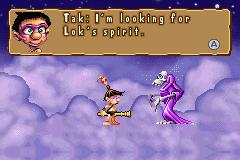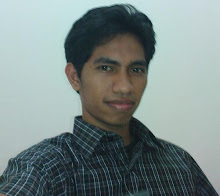
"High Vibes...It was a Good Gig"
By ROBERT FISK
Arabs have never been squeamish about death. They see too much of it. So on the streets of Baghdad Iraqis will pore over the all-too-soon-to-be-iconic photographs of Uday and Qusay.
They will say, some of them, "Yes, that's them, the terrible brothers, the 'lion-cubs' of the monster of Baghdad." And others will ask--a good question this--why couldn't they see them yesterday, or indeed the day before?
Others still will ponder the old Arab belief in the "moamarer", the plot, the conspiracy. Did the Americans linger to fake the pictures? Have they digitised the brothers' faces to make them appear dead while still they live?
The bullet wound in Uday's head, for example, the one that knocked out the teeth and part of the nose. Now there's many an Iraqi who would like to have fired the fatal shot.
But what if Uday did take his own life rather than surrender to the enemy? What if he went down fighting, saving the last bullet for himself--and some suggestions have been made the wounds indicate suicide. Now that is an idea which can appeal to the tribal nature of Iraqi society. Iraqis have spent their lives fighting foreigners. Wasn't Uday doing the same?
And history, which has an unhappy way of reorganising the most staged of events, might just conspire to turn these photographs into those of martyrs. Which is what the Baath militiamen will do. Cruel the brothers may have been. But cowards? That will be the message.
In other words, the publication of these photographs will prove either a stroke of genius or a historic mistake of catastrophic consequences.
In the cavernous interior of Baghdad's convention centre, earlier this week journalists asked General Ricardo Sanchez, the American commander in Iraq, why he didn't capture Saddam's sons.
What about the little matter of blasting their way into Uday's and Qusay's Mosul hiding place with helicopter rockets and 10 anti-armour TOW missiles rather than collaring the evil brothers and putting them on trial, to emphasise--over months--the wickedness of Saddam's rule. It turned out--this is according to the general--that the "commander on the ground" in Mosul decided to storm the building; it was an "operational decision". This was breathtaking.
An officer in the 101st Airborne, with hours to plan a siege, gave the order to his 200 soldiers to blast their way into the house at 11.55 on Tuesday morning. Just like that. Wasn't Sanchez consulted? Wasn't President Bush? Or had the decision already been taken to kill the brothers?
Now General Sanchez is obviously a smart guy--even if his bland refusal to grasp the importance of all these questions bordered on arrogance--and he told us that his soldiers had initially adopted the "cordon and knock" procedure.
This appeared to be a military version of the old "Avon calling" technique in which a soldier with a bullhorn (the general used that word) ordered the brothers to give themselves up before military action began. Twice the Americans attempted to storm the fortified upper floor of the villa, receiving four wounded--three on the stairs and one outside at the first attempt--when the four occupants of the house fired Kalashnikov rifles at them.
But now came the point.
The Americans are experts in siege techniques (viz General Manuel Noriega). So why not put a cordon round the villa, evacuate local civilians, point lights at the building, blast it with loud music (the Noriega technique) and starve them out? No Iraqi would have been able to doubt the truth if they eventually saw Uday and Qusay Hussein emerging with their hands up.
But no. In went the rockets from the Kiowa CH-58 helicopters, in went the 10 TOWS, in went the 50-cal machine-gun bullets--there were also Apache gunships and A-10 anti-tank aircraft in readiness,--and on the third attempt to enter the house, "there was no fire as we moved up the stairs". Surprise, surprise. But then again, had not General Sanchez admitted that preparations had been made to "neutralise the target"?
Now there are Iraqis aplenty comfortable with the thought that Uday and Qusay are dead, especially Uday. His cruelty was legendary. "It would be justice after what he has done," an old Iraqi friend of mine said. But note the words "would be". The level of scepticism remains high despite the pictures.
US Defence Secretary Donald Rumsfeld said yesterday he was glad he decided to release the photographs of the bullet-torn bodies which would help to convince frightened Iraqis that Saddam's rule was over and that far outweighed any sensitivities over showing the corpses.
"I feel it was the right decision and I'm glad I made it," Rumsfeld told a Pentagon news conference. The Pentagon historically has refused to release pictures of either American or enemy war dead, but the secretary said he ordered bending that unofficial rule.
"It is not a practice that the United States engages in on a normal basis," he said, but "I honestly believe that these two are particularly bad characters, and that it's important for the Iraqi people to see them, to know they're gone, to know they're dead, and to know they're not coming back."
Rumsfeld and Paul Bremer, the US civil administrator in Iraq, told reporters the release of the pictures did not violate the Geneva Conventions. Asked whether he believed the Iraqi people would believe the evidence, Bremer said, "I think we can anticipate there will be, as there always are, programmes of disinformation put out by others. But I think most of them will believe that they're dead."
Bremer said he believed that, in time, the deaths would help to reduce the security threat to US forces although there might be an "uptick in violence" against those troops in the short term.
Many Iraqis said in Baghdad they were not convinced and demanded the corpses should be dragged through the streets as proof the feared brothers were dead.
"Death is not enough. They should have been hung up on poles in a square in Baghdad so all Iraqis could see them. Then they should have died as people ate them alive," said businessman Khalil Ali. "The photographs do not mean anything."
For Iraqis who had waited all day to see the photographs on television there was the frustration of yet another electricity blackout. "We wanted to see it and then have our wedding celebrations," said Nabeel Ahmed, 33, a wedding hall owner. "What can you do?"
"This is all a deception. The Americans are just playing games," said housewife Sajida Abdel Rahim. "Besides why is it such a big deal? Don't you think the British and Americans commit atrocities?"
Inside a cramped studio, plastics artist Fuad Haman, 41, guesses the two-day delay in showing pictures of Uday and Qusay comes from the elaborate preparations to fake their corpses.
Earlier General Sanchez rejected criticism of the fatal raid.
"I would never consider this a failure. Our mission is to find, kill or capture.
"In this case, we had an enemy that was defending, it was barricaded and we had to take the measures that were necessary to neutralise the target."
So why not wait longer, Sanchez was asked. Waiting the brothers out had been considered, he said, responding to a question with visible irritation, "but we chose the course of action that we took".
Bremer suggested he didn't care whether Saddam, his sons or others on the American most-wanted list were taken dead or alive. Experts disagreed.
"If the Americans captured Uday and Qusay, they would have known all about the old regime, all about the weapons of mass destruction and resistance groups," said Fouad Allam, an Egyptian terrorism expert.
On the other hand, said Jonathan Stevenson, a senior counterterrorism fellow at London's International Institute of Strategic Studies, Saddam's sons may have known very little.
On balance, he suggested, killing them may have provided the Americans more propaganda gain than information loss.
"The value of keeping alive the two sons was probably rated low, while the value of killing them, with its potential power to galvanise the larger population's confidence in the Americans to furnish security, was probably rated as high," said Stevenson, an American.
But Iraq's 25-member Governing Council said the brothers should have been captured, not killed. The council, hand-picked by Bremer, couched its opinion, however, in diplomatic language, saying the interim Iraqi authority "would have liked for them to be arrested" to stand trial and confess their crimes.
A group loyal to deposed Iraqi leader Saddam Hussein vowed vengeance in a videotape broadcast on an Arab television network.
"We pledge to you Iraqi people that we will continue in the jihad [holy struggle] against the infidels," said a masked man claiming to be from Saddam Fedayeen on the tape carried by Al Arabiya.
At the same time Gen Sanchez was speaking a new Saddam tape surfaced. Saddam's peroration to Iraqis came in his usual scratchy voice. Since he made it when his sons, faintly alluded to in the text, were still alive, it was a little out of tune with reality.
But it was the authentic Saddam, even referring to a previous Sanchez address to the nation. "When the enemy declares that the war has not ended in Iraq, he is quite right because it has not finished at any level ... the enemy won the fight but he failed to achieve other things ... I call upon you to start rejoining the 'mujahidin', anywhere and everywhere, and to make contact with others to do the same ... everyone is now a commander."
So perhaps thought the demonstrators who protested in Mosul, just as a sergeant in the 101st Airborne, discovering that he'd helped to kill the brothers, described how he and his comrades felt "high vibes ... it was a good gig".
And so perhaps did the killers of three more American soldiers in the latest attacks. General Sanchez unwittingly echoed the Saddam tape.
"The war goes on," he cheerfully announced, as if all of Iraq did not realise the fact.

No comments:
Post a Comment